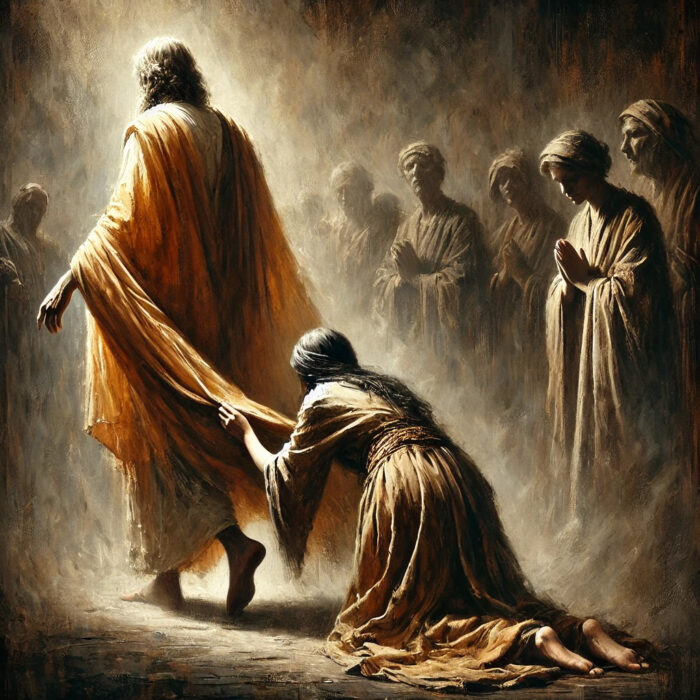
The miracles of Jesus Christ are an essential part of his story and an essential part of the Christian faith. Removing the miracles from Christianity is not an option. As C. S. Lewis put it:
All the essentials of Hinduism would, I think, remain unimpaired if you subtracted the miraculous, and the same is almost true of Mohammedanism. But you cannot do that with Christianity. It is precisely the story of a great Miracle. A naturalistic Christianity leaves out all that is specifically Christian. (Lewis, Miracles, 108) It turns out that the evidence that Jesus performed miracles is quite strong—so strong, in fact, that skeptical scholars generally admit he did so without conceding that they were literally supernatural.
Jesus’ Miracles Were Conceded by the Jews in the First Century and Beyond
One of the reasons scholars acknowledge that Jesus performed works that appeared to be miracles is that Jews who did not accept Jesus as the Messiah conceded the point in his own day and for centuries afterward.
1. Jesus’ Jewish critics admitted miracles but attributed them to the Devil.
The ancient opponents of Jesus and of early Christianity never denied that Jesus had performed miracles; instead, when they offered any opinion about them, they characterized them as sorcery or as the work of the Devil. We can see this in the Gospels themselves, where they report the scribes as offering this explanation: “And the scribes who came down from Jerusalem were saying, ‘He is possessed by Beelzebul,’ and ‘by the prince of demons he casts out the demons.’ ” (Mark 3:22 ESV; see also Matt. 9:34; 10:25; 12:24; Luke 11:15)
It is highly unlikely that the gospel writers, or their Christian sources, would volunteer to nonbelievers this way of explaining away Jesus’ miracles. We may therefore consider it certain that first-century Jewish critics of Christianity were claiming that Jesus performed miracles by the power of the Devil. The way the criticism is articulated is important here. The scribes referred to the Devil as “Beelzebul” and “the prince of demons,” expressions used by first-century Jews and that would not likely be familiar to most Gentile Christians. Beelzebul was an alternate form of the name Baal-zebub, which appears in the Bible only in 2 Kings 1:2–16 as the name of a Philistine deity. Almost certainly, this criticism was being made in Jesus’ day, as the Gospels report. One reason this is most likely is that Mark and Luke were written mainly for Gentile readers, yet they both include the reference to the Devil as Beelzebul. This tells us that this specific criticism came to the Gospels in that form and predated both gospels.
2. Josephus described Jesus as “a worker of amazing deeds.”
Toward the end of the first century, the Jewish historian Josephus described Jesus as “a worker of amazing deeds” (Josephus, AJ, 18.3.3 §63) in the midst of a passage controversial for its clear reflection of a Christian perspective (and no one thinks Josephus was a Christian). For example, the passage states about Jesus, “He was the Messiah,” and affirms the resurrection of Jesus as a fact. Some skeptics still argue that the entire passage was added by a later Christian writer. However, as theologian Robert Van Voorst observes, “The majority of scholars today prefer a middle position between accepting the entire passage as authentic or rejecting the entire passage as inauthentic.” These scholars generally maintain that one can eliminate the obvious Christian elements as later additions (called interpolations) and what remains is a religiously “neutral” description of Jesus as an historical person. (Van Voorst, SENT, 605)
One of the statements about Jesus in the passage that scholars are generally in agreement was written by Josephus is the description of Jesus as “a worker of amazing deeds [paradoxōn ergōn].” If this had been a Christian interpolation, one would have expected the language to be stock Christian terminology for miracles. The three terms most commonly used in the New Testament for miracles are dunamis (“deed of power,” “mighty work”), teras (“wonder”), and sēmeion (“sign”). All three of these words occur together in Acts 2:22, where the apostle Peter says that God performed “mighty works and wonders and signs” through Jesus. The word paradoxos (from which our word paradox originates) is used in reference to a miracle only once in the New Testament, when the people in Galilee commented about Jesus’ miraculous healings, “We have seen amazing things [paradoxa] today!” (Luke 5:26 NLT). On the other hand, as Josephus scholar Steve Mason has pointed out, Josephus used the precise expression “amazing deeds” (paradoxōn ergōn) in two other places in the same book (Antiquities of the Jews 9.182; 12.63). (Mason, JNT, 233)
All in all, then, the evidence shows that Josephus did make reference to Jesus as someone who was known as a miracle worker, while using “carefully neutral” language that stopped short of endorsing Jesus’ miracles as divine in origin. (Van Voorst, JONT, 104) Josephus, although Jewish, wrote primarily for Roman readers after the fall of Jerusalem in AD 70; considering his Roman audience, for whom Jesus’ religious activities were not as contentious an issue as they were for Jews, he did not need to criticize Jesus’ miracles or take a stand as to whether they were demonic or holy.
3. Jews after the first century conceded Jesus’ miracles but attributed them to sorcery.
Various Jewish sources over the next several centuries referred to Jesus’ miracles. The best known of these sources is the Babylonian Talmud, which stated that Jesus was guilty of “sorcery” (b. Sanh. 43a). The Babylonian Talmud was compiled from about the third to the fifth centuries (probably achieving final form somewhat later) and includes rabbinical traditions going back to the time of Jesus and earlier.
Not everything the Talmud says about Jesus is historically reliable. For example, the same passage says something no historian thinks actually took place: that a herald or crier announced for forty days that Jesus was to be executed before the sentence was carried out. This means that we need to be cautious about basing strong claims on the Talmud’s brief references to Jesus. Nevertheless, where it agrees with earlier sources, it may be regarded as adding confirmation or support to what those earlier sources say.
Obviously, the Talmud’s statement that Jesus was guilty of sorcery did not come from Christians. Instead these writers were reporting how the Jewish rabbis who rejected Jesus as the Messiah viewed his miraculous works. This makes their statement an independent testimony to the fact that Jesus was well known in Jewish history as a miracle worker. Graham Twelftree comments:
Although this material does not give us contemporary evidence of Jesus being a miracle worker, it does give us (importantly) independent and indirect evidence in that it shows that Jesus was (or at least had come to be) remembered as a sorcerer-healer. . . . Though the rabbinic material is late, it is valuable in that it does not appear to be dependent on Christian traditions. (Twelftree, JMW, 254–255)
The evidence from the Gospels, Josephus, and the Talmud all support the conclusion that Jesus performed healings that appeared to be miraculous. The Jews who did not believe in him did not dispute this. What they disputed was the source of Jesus’ miraculous power.
Jesus’ Miracles Are Attested in the Gospels and All of Their Sources
Because of their careful study of the Gospels themselves, biblical scholars, even rather skeptical ones, have conceded that Jesus performed works appearing to be miracles. As they have attempted to “drill down” beneath the surface of the Gospels to find the earliest sources of information about Jesus, they have been unable to find any evidence of a Jesus who did not perform miracles.
Although scholars disagree about the origins of the Gospels, almost all agree that the gospel writers drew on various sources—oral, written, or both. Luke refers to earlier writings about Jesus and to the existence of eyewitnesses whose testimonies preserved memories of what Jesus had said and done (Luke 1:1–4). By comparing the Gospels with one another, scholars can make reasonable inferences about the sources underlying the Gospels, taking careful note of what materials they have in common and what materials are unique to each book. The more independent sources of information support the same claims about what Jesus said and did, the more difficult it becomes to undermine the trustworthiness of the testimony of the gospel writers. Scholars call this principle multiple attestation. It doesn’t mean that events and details found only in one source are necessarily suspect; rather, it means that if those events and details are discovered in multiple independent sources, they become difficult to discount, even on skeptical grounds.
Applying this line of reasoning, scholars have found impressive multiple attestation for the reports that Jesus performed both healings and exorcisms. Each gospel contains miracle reports that are unique to that gospel, such as the casting out of a demon from a mute man (Matt. 9:32–34), the healing of a blind man by touching him a second time (Mark 7:31–37), the raising of the widow’s son in Nain (Luke 7:11–17), and Jesus healing a man who had been born blind (John 9:1–39). The healing of the centurion’s boy is found only in Matthew (8:5–13) and Luke (7:1–10); the healing of the Gentile woman’s daughter is found only in Matthew (15:21–28) and Mark (7:24–30); and the casting out of the unclean spirit in the synagogue is found only in Mark (1:21–28) and Luke (4:31–37). Matthew, Mark, and Luke share some nine different miracles of Jesus, such as the raising of the synagogue official’s daughter and the healing of the woman with a blood flow (Matt. 9:18–26; Mark 5:21–43; Luke 8:40–56). One miracle of Jesus, the feeding of the five thousand, is found in all four gospels (Matt. 14:13–21; Mark 6:33–44; Luke 9:12–17; John 6:1–15). So pervasive are miracle accounts in all of the different parts of the Gospels that it is clear that all of the sources on which the Gospels drew included such accounts.
Scholars of varying theological points of view agree on this point. Keener comments:
So central are miracle reports to the Gospels that one could remove them only if one regarded the Gospels as preserving barely any genuine information about Jesus. . . . Very few critics would deny the presence of any miracles in the earliest material about Jesus. (Keener, MCNTA, 23–24)
Not only are miracle accounts found in every layer of the gospel narratives, references to miracles are found in an impressive variety of contexts. The variety of contexts alters the picture, for if the only context were simply reports of his performance, that limitation of form would lead some to surmise that the gospel writers merely set down legendary narratives to elevate the reputation of their teacher. Instead, the variety of literary forms in the Gospels transcends any limitation to miracle tales. As it turns out, references to Jesus’ miracles are found in virtually every literary form or context of the Gospels. Twelftree lists some of these forms:
The witness of various literary forms in the Gospels also gives support to the view that Jesus performed miracles. There are biographical sayings, parables, a dispute story, sayings of instructions and commissionings, as well as the stories of exorcism, healing, raising the dead and so-called nature miracles. (Twelftree, JMW, 256)
This collection of multiple independent sources and multiple literary forms or contexts all referring to Jesus performing miracles constitutes a strong “one-two punch” against the notion that the idea of Jesus as a miracle worker originated as legend or myth in the early church. All this proves that Jesus was known as a miracle worker during his time on earth. As John P. Meier, a Catholic scholar whose approach is deliberately somewhat skeptical, concludes:
In short, multiple sources intertwine with multiple forms to give abundant testimony that the historical Jesus performed deeds deemed by himself and others to be miracles. . . . For hardly any other type of Gospel material enjoys greater multiple attestation than do Jesus’ miracles. (Meier, MJ, 622)
The Early Church Had No Motive to Invent the Idea That Jesus Was a Miracle Worker
The fact that the Gospels and their sources all spoke of Jesus as performing miracles might be dismissed as evidence if we had reason to suspect that the early church would have felt it necessary to invent the miracle stories in order to “sell” Jesus to the Jews as a prophet or Messiah, or to Gentiles as a redeemer. As it turns out, we have good evidence that they had no such motive.
Stories of miracle workers were rare during the time of Jesus.
Most people in the ancient Mediterranean world seem to have believed in the possibility of miraculous events, but stories of such occurrences were surprisingly uncommon. The modern assumption that ancient people were superstitious folk who easily believed in miracles is something of a half-truth at best. While it is true that ancient people did explain natural phenomena (especially in the heavenly bodies and in the forces of nature) as in some way to be the activity of the gods, that doesn’t mean they uncritically accepted claims about supposed miracle workers. Gospel scholar Graham Stanton explains why belief in Jesus as a miracle worker cannot be chalked up to the credulousness of people in the first century:
In antiquity miracles were not accepted without question. Graeco-Roman writers were often reluctant to ascribe miraculous events to the gods, and offered alternative explanations. Some writers were openly sceptical about miracles (e.g. Epicurus; Lucretius; Lucian). So it is a mistake to write off the miracles of Jesus as the result of the naivety and gullibility of people in the ancient world. (Stanton, GJ, 235)
Indeed, during the era in which Jesus lived few persons claimed to be miracle workers, as historian A. E. Harvey explains:
If we take the period of four hundred years stretching from two hundred years before to two hundred years after the birth of Christ, the number of miracles recorded which are remotely comparable with those of Jesus is astonishingly small. On the pagan side, there is little to report apart from the records of cures at healing shrines, which were certainly quite frequent, but are a rather different phenomenon from cures performed by an individual healer. Indeed it is significant that later Christian fathers, when seeking miracle workers with whom to compare or contrast Jesus, had to have recourse to remote and by now almost legendary figures of the past such as Pythagoras or Empedocles. (Harvey, JCH, 103)
McDowell, Josh; McDowell, Sean. Evidence That Demands a Verdict: Life-Changing Truth for a Skeptical World.



